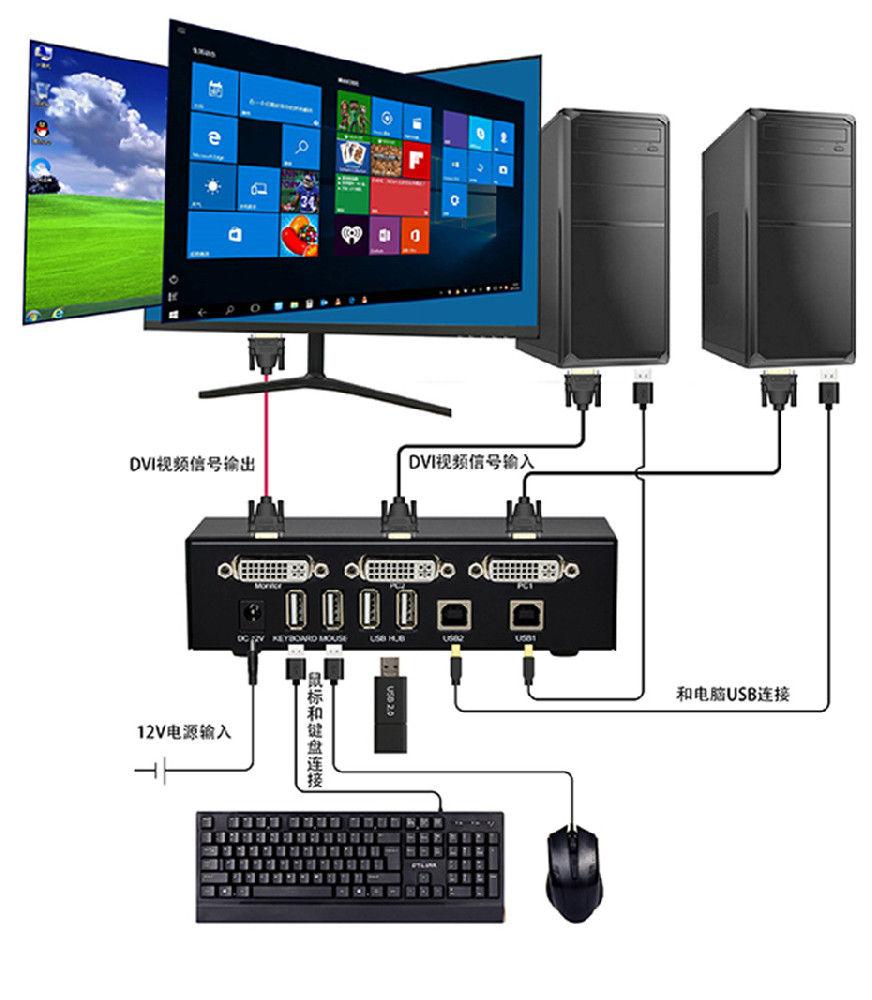友情链接:
Contact us Chinese English Alibaba
DYLINK new technologyNational High-Tech Enterprise
Service Hotline0755 86120002


Service Hotline0755 86120002
The main working principle of the photoelectric encoder is photoelectric conversion, but it can be divided into incremental type, absolute type and hybrid incremental type according to the principle. So how does photoelectric conversion work?
1. The working principle of photoelectric encoder--Introduction
Photoelectric encoder, also known as handwheel pulse generator, referred to as handwheel, is a sensor that converts the mechanical geometric displacement of the output shaft into pulses or digital quantities through photoelectric conversion. It is mainly used in various numerical control equipment. A sensor with many applications.
2. Working principle of photoelectric encoder - - Classification
There are two classification standards for photoelectric encoders: national standard and non-national standard. According to different raw materials, it can be divided into natural rubber type, plastic type, bakelite type and cast iron unloading type. According to different styles, it can be divided into round rim type, inner corrugated type, flat surface, dial type, etc. Divided into optical type, magnetic type, inductive type and capacitive type, according to the scale method and signal output form can be divided into incremental type, absolute type and hybrid type.
3. Working principle of photoelectric encoder
The photoelectric encoder is mainly composed of a grating disk and a photoelectric detection device. In the servo system, the grating disk and the motor are coaxial, so that the rotation of the motor drives the rotation of the grating disk, and then several pulse signals are output through the photoelectric detection device. The number of pulses per second can calculate the current speed of the motor.
The code disc of the photoelectric encoder outputs two optical codes with a phase difference of 90 degrees. According to the change of the state of the dual-channel output optical codes, the rotation direction of the motor can be judged.
Fourth, the working principle of photoelectric encoder - Incremental encoder
Incremental encoder is a kind of photoelectric encoder. Its main working principle is photoelectric conversion, but it outputs three groups of square wave pulses A, B, and Z. The phase difference between the two pulses of A and B is 90 degrees to judge. The rotation direction of the motor, the Z pulse is one pulse per revolution to facilitate the positioning of the reference point.
5. Working principle of photoelectric encoder - absolute encoder
The main working principle of the absolute encoder is photoelectric conversion, but its output is digital. There are several concentric code tracks on the code disc of the absolute encoder, and each code track is intersected by light-transmitting and opaque sectors The number of code tracks is the number of binary digits of the code disc where it is located. The two sides of the code disc are the light source and the photosensitive element respectively. The binary number is used to judge the position of the code wheel.
Sixth, the working principle of photoelectric encoder--Hybrid absolute encoder
The main working principle of the hybrid absolute encoder is also photoelectric conversion, which is different from the incremental and absolute encoders in the output. The output of the hybrid absolute encoder
信息有两组,一组输出信息为A、B、Z三组方波脉冲,与增量式编码器的输出完全不同,另一组输出信息具有绝对信息功能,主要用于磁极位置的检测。
标签:DP编码器

业务主管
业务经理
业务经理
业务经理
售后